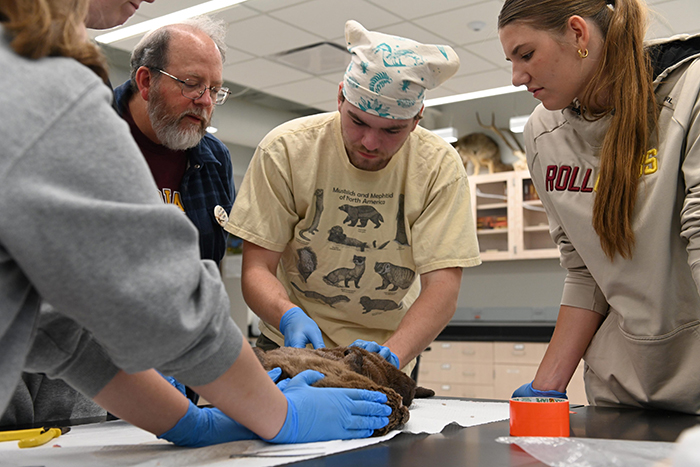Concordia joins Salvage Wildlife program as official partner
News | Published on October 21, 2025 at 2:58pm GMT+0000 | Author: Tucker Henderson
0Community can contribute intact roadkill and other specimens

Concordia biology students prepare an otter that was donated from the Mahnomen, Minnesota, area.
Concordia College has officially joined the University of Minnesota’s Bell Museum as a remote partner in its Salvage Wildlife project. It’s a statewide initiative that transforms deceased animals into valuable scientific specimens to support education and research on environmental health, ecology, and conservation.
The project, funded by the Minnesota Environment and Natural Resources Trust Fund, invites the public to collect and donate freshly deceased animals found in nature, including intact birds and small mammals. Specimens are then prepared and preserved for use in museum collections, classrooms, and research labs.
As a newly listed partner on the Bell Museum’s Salvage Wildlife webpage, Concordia is now accepting wildlife specimens directly from the public. Donated animals will be processed at the college’s Elsie Welter Natural History Museum, where they may be added to the college’s teaching and research collections or forwarded to the Bell Museum for broader scientific use.
“This partnership allows us to contribute meaningfully to a statewide effort that blends citizen science, conservation, and education,” said biology professor Dr. Joseph Whittaker. “It’s also a great opportunity for our students to gain hands-on experience in specimen preparation and museum curation.”
When collecting specimens, people should use a plastic bag like a glove (don’t touch it directly) and write down where it was found, when it was found, who found it, and how it may have died. People should close the bag tightly and store it in a freezer as soon as possible.
To make a donation, contact Dr. Whittaker by phone at 218.299.3739 or email at jwhittak@cord.edu.
For more information on what is an acceptable donation and how to safely collect and deliver specimens, visit ConcordiaCollege.edu/Biology and click on the Salvage Wildlife link.
